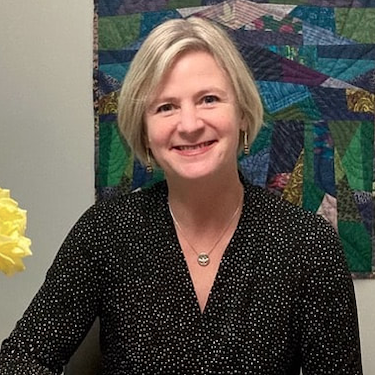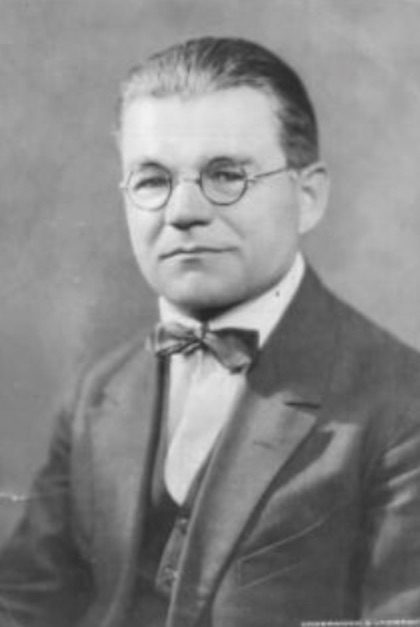Finding Our Story Within Eco‑Spirituality
Enviro Page → Roots and Wings
Roots and Wings
Finding Our Story Within Eco‑Spirituality
Ecology and Spirituality
A Vision for Unitarianism and Unitarian Universalism
in the 21st Century
Presented by Rev Lara Cowtan
at the UUE Eco‑Spirituality Conference in Prague
September 15th, 2018
Čapek Hall, Anenská 5, Prague 1 (Old Town)

Rev Lara Cowtan

Cypresses in Starry Night, Reed Drawing by Van Gogh
Our spiritual response to the environmental crisis can bring us to understand ourselves as part of the divine wholeness of the natural world, finding our self intertwined with the web of life in a way that enriches all life.
Our planet Earth is in critical condition. We are all here today because we share a sense of responsibility and want to make a difference.
However, not all people of faith share this view with us. There are those whose religious views include an Armageddon, end of days, second coming of Christ, escaping the doomed planet on an alien spaceship, or by some magical transporter. They are not interested in saving our Mother Earth or even mankind. Indeed, they may be interested in hastening the demise of our host planet,so they may witness the ultimate judgement day. An overwhelming number of people today are simply complacent. If the end is near, why bother? They feel they can’t change anything, so just live as they wish, with no thought of the consequences.
Liberal religious people are no strangers to working for environmental justice, many of us live and act in ways that demonstrate our values of caring for land, water, animals and plants. Eco-Spirituality looks beyond our sense of justice to connect us even more deeply with how we engage with nature on a personal and spiritual level.
The principles are simple: In order to resolve such environmental issues as depletion of species, global warming, and over-consumption, humanity must examine and reassess our underlying attitudes and beliefs about the earth, and our spiritual responsibilities toward the planet.
What this actually looks like in our daily lives is not so simple, and the stakes are high.
After being invited to speak at this conference, I was discussing the theme with my father-in-law. A retired Swiss family doctor, who also practiced Chinese Medicine and acupuncture, Karl is a deeply thoughtful and spiritual person. He also has endless rows of bookshelves with reference material on anything you can imagine. He came to my house a few days later and gave me an old printed pamphlet he thought I might find useful. It was Ralph Waldo Emerson’s essay “Nature”, written in 1836. Emerson was part of a group known as Transcendentalists, who built on the early American Unitarian values of free conscience and the use of intellectual reason, moving towards a more spiritual exploration of the inherent goodness of people and nature.
Emerson re-imagined the Divine as something large and visible, which he referred to as nature. He describes nature as a spiritual being that provides for humankind, and believed humankind, in return, must care for nature. Emerson recommended that people find a way to be in good relationship with nature, as nature gives generously all that we need, but humans often fail to reciprocate. (Emerson, 1836, Retrieved February 3, 2018 – via Internet Archive.) This idea was the seed for further writers and thinkers weaving personal experience of nature with spirituality, leading through the ages to our modern liberal faith traditions.
Emerson’s “Nature”reminded me of the old story of the Unitarian Farmer. Farmer Brown bought an old abandoned farm. The land was overgrown with weeds, the farmhouse and barn falling apart. On his first day there,the local town preacher stopped by to give a blessing and prayer, saying, “may God bless you and make this land fertile and bountiful”.
The Preacher returned after a few months and found the farm transformed. The house and barns had fresh paint and a tidy yard, healthy young animals in well-fenced pens, fields lined with straight rows of green crops. “Amazing!” The preacher says, “Our prayers were answered! Look what God and you have accomplished together!”. “Yes reverend.” The Unitarian farmer says. “But remember what a mess the farm was when it was in God’s hands alone?
”We Unitarians and religious liberals know that it is by our hands that the work gets done, and we cannot wait for miracles or prayers alone. We accept responsibility for our lives and our world, not expecting God to save us. We cannot not act. We are people of action and of justice. We work to make our world a better place by helping people when there is injustice and by living in a way that not only minimizes our environmental impact, but, hopefully will repair some of the damage people have caused. This is part of how we live our faith. We “do” things. We sign petitions, make signs, march in protest, buy responsibly produced products and use renewable resources when possible. We feel compelled to do something, but what?
Unitarian Universalists have included as one of their seven guiding principles: “Respect for the interdependent web of all existence of which we are a part.” This principle directs us to act for the environment, and on behalf of all other living creatures. The Humanist view puts responsibility and accountability purely on humanity for correcting the plight of the world and its creatures, not trusting in a supernatural force to intervene and save us. We can, so we must. We are doers.
This reminds me of another story; Operation Cat Drop. (1) In the early 1950s, there was an outbreak of a serious disease called malaria amongst the Dayak people in Borneo. The World Health Organization tried to solve the problem. They sprayed large amounts of a chemical called DDT over Borneo to kill the mosquitoes that carried the malaria. The mosquitoes died and there was less malaria. That was good. However, there were side effects.
One of the first effects was that the roofs of people’s houses began to fall down on their heads. It turned out that the DDT was also killing a parasitic wasp that ate thatch-eating caterpillars. Without the wasps to eat them, there were more and more thatch-eating caterpillars. Worse than that, the insects that died from being poisoned by DDT were eaten by gecko lizards, which were then eaten by cats. The cats started to die, the rats flourished, and the people were threatened by outbreaks of two new serious diseases carried by the rats, sylvatic plague and typhus. To cope with these new problems, which it had itself created, the World Health Organization engaged a Singapore squadron of the British Royal Air Force to parachute 14,000 live cats into Borneo! ”Can you imagine this sight?
We can, so we must? There is no simple “fix”. Spiritual Ecology leads us to understand that nature is sacred, complex and interconnected, so tinkering around with it by spraying toxins and air-dropping cats just aren’t viable options for our survival.
Religious Naturalism takes science and reason and blends it with religious experience and the understanding of all life as being a connected system. According to Rue, “Religious naturalists are known for their reverence and awe of Nature, their love for Nature and natural forms, their sympathy for all living things, their guilt for enlarging the ecological footprints, their pride in reducing them, their sense of gratitude directed towards the matrix of life, their contempt for those who abstract themselves from natural values, and their solidarity with those who link their self-esteem to sustainable living.” (Rue, 2005) Does this sound like anyone you know?
In his book, The Promise of Religious Naturalism, Michael Hogue shares academic insights into Religious Naturalism having a transformative potential of bringing value and meaning to moral and ethical challenges of ecological concerns. Hogue writes, “In short, genuinely comprehensive environmental work needs to be deeply religious work.” (Add Citation M. Hogue.)
Anyone who has seen the sweeping, organic buildings of Unitarian architect, Frank Lloyd Wright, would understand this principle that inspired him. He said, “I believe in God, only I spell it Nature”. He often brought aspects of nature into his buildings with his use of natural light, plants, shapes and water. He had an intuitive relationship to the processes and cycles of the earth, creating spaces for people to live in harmony with nature, some like tree-houses.
This reminds me of another story, actually, a movie. Movies often teach theology.
In 2009, director James Cameron created a special effects marvel that has likely influenced an entire generation of people to appreciate nature in a new way. Avatar had overt political overtones, with a destructive military culture invading the pristine planet of Pandora to harvest its natural resources without considering the consequences for the environment or inhabitants.
Diplomatic attempts to peacefully relocate the indigenous Na’vi people from a valuable mineral site ended in a massacre of the peaceful tribe and destruction of their ancestral home in an ancient tree. The Na’vi worship Eywa, a goddess similar to what the Greeks called Gaia, or Mother Earth. Eywa appears to be an impersonal, godlike force that is responsible for maintaining the delicate balance of all life. Everything on Pandora is linked to Eywa mystically and biologically with pathways of energy and communication. The biological emphasis amplifies the critical nature of preserving the planet’s physical ecological system.
Demonstrating the connectedness of all life forms, the spirits of animals that are killed for food or in self-defense are addressed by the Na’vi either in thanksgiving or apologetically. The movie’s title and image of the Na’vi are derived from the Hindu god Krishna, a blue-skinned incarnated avatar of the god Vishnu. Hinduism teaches that throughout history avatars have manifested in human and/or animal forms to restore the balance of good and evil. (https://www.thebereancall.org/content/avatar-gospel)
Avatar is an adventure in ecological theology. The natives of Pandora revere the beauty of creation as a system, and they see themselves as part of that whole.
The Buddhist teacher Thich Nhat Hanh (Tick Not Han) speaks of the importance of mindfulness in taking care of our Mother Earth, and how the highest form of prayer is real communion with the Earth. [“Thay: Beyond Environment”. Ecobuddhism. Retrieved 2015-08-28]
David Suzuki, a scientist, environmentalist, and leader in sustainable ecology, also expresses the importance of including the sacred in addressing the ecological crisis: Suzuki says, “The way we see the world shapes the way we treat it. If a mountain is a deity, not a pile of ore; if a river is one of the veins of the land, not potential irrigation water; if a forest is a sacred grove, not timber; if other species are biological kin, not resources; or if the planet is our mother, not an opportunity—then we will treat each other with greater respect. Thus is the challenge, to look at the world from a different perspective.”[21]
Eco-Spirituality includes a variety of people and practices that blend differing spiritual and environmental experience and understanding, weaving scientific and religious understandings. There is, today, a developing consciousness expanding beyond the dualities of human/earth, heaven/earth, mind/body. Exploring Eco-spirituality can bring us to recognize the unity and interrelationship, or “interbeing,” the interconnectedness of all of creation. The interdependent web of all existence of which we are a part.
This summer I was in Canada, on a lake in an area of wild untouched beauty. This is the place of my childhood summers, and the place my mind and heart go to in times of meditation, or seeking peace. This place of soaring eagles, playful beavers, cool, fresh water, starry skies, breathtaking sunsets and, yes, even the mosquitos, this place has always been my church, my roots and wings. Where I can go, physically or mentally, to seek the Divine, to connect with Spirit. As so many others, I seek out nature for spirituality, and I find my Spirit in Nature.
Where do you go? Can you visualize it? (Close eyes, get comfortable.) Think of the times you have been struck by Awe, by Grace, that feeling of utter love and selflessness, of connection. Was it sitting by a waterfall? the waves of the ocean? lying in tall grass watching clouds? or feeling the unstoppable power of a storm marching towards you? is it in the eyes of a newborn? or laughter of a child, the unbridled joy of your dog playing. These are the threads, the roots that bind us with the beauty and essence all of creation, with all that is, has been and will be. Some call it God, some call it Nature.
In her wise, lovely book, Braiding Sweetgrass, Canadian botanist and indigenous woman, Robin Wall Kimmerer shares stories of earth-based wisdom, through the lenses of science and tradition. There are many rich stories woven in her pages, but I will share only one with you today, of asters and golden rods. Kimmerer writes of the remarkable beauty of her homeland’s fields in September. “As if harvest time were not enough — peaches, grapes, sweet corn, squash — the fields are also embroidered with drifts of golden yellow and pools of deepest purple, a masterpiece.”
She told her university adviser that she wanted to study botany, “because I want to learn about why asters and goldenrod looked so beautiful together. “She wasn’t taken very seriously. He replied, “I must tell you that that is not science.” she tried again: “I’d like to learn why plants make medicines, why willow bends for baskets and why strawberries are sweeter in the shade.” “Also, not science,” he said. “I just wanted to know why. Why do they stand beside each other when they could grow alone? Einstein himself said that “God doesn’t play dice with the universe.” Why is the world so beautiful?
She studied the formulas, facts, figures, the mechanical structures of hard science, learned about evidence and logic. After her PhD, Kimmerer met a Navajo woman who shared the ancient teachings. “One by one, name by name, she told of the plants in her valley. Where each one lived, when it bloomed, who it liked to live near and all its relationships, who ate it, who lined their nests with its fibers, what kind of medicine it offered. She spoke of beauty.” Kimmerer then used her scientific knowledge and discovered there are special color receptor cells in the eye, she learned about colors that are reciprocal pairs, meaning they make one another even more vivid.
Asters and golden rods have known this for a long time. Their striking contrast when they grow together makes them the most attractive target for bees in the whole meadow. Growing together, both receive more pollinator visits than they would if they were growing alone. They thrive together. Kimmerer writes “That September pairing of purple and gold is lived reciprocity; its wisdom is that the beauty of one is illuminated by the radiance of the other. Science and art, matter and spirit, indigenous knowledge and Western science — can they be goldenrod and asters for each other? When I am in their presence, their beauty asks me for reciprocity, to be the complementary color, to make something beautiful in response.” (Kimmerer, 2014)
The beauty of the earth asks us to make something beautiful in response. Yes. I feel that. I hear that. I can see that, Can you?
Right here, in this place, flowers also have a special relationship with the people. 95 years ago, the founders of the Unitarian Church here, Rev. Norbert Capek, and Rev. Maja Capek turned to the native beauty of their countryside to create a ritual for this community that would bind people together. This Flower Ceremony has become a lasting tradition around the world, speaking to people of the beauty of diversity, the resilience of community and of our relationship with the natural world.
The power and attraction of this simple ceremony illustrates how our rituals celebrate our relationship with the extraordinary, natural beauty of life, making things we may otherwise take for granted into sacred objects, drawing us into mindfulness of our divine connections to one another and to all of creation. Ceremonies have the power to wake us to hearing, seeing, feeling, recognizing again the ancient knowing we have of belonging to something greater than ourselves, than our own individual lives.
Sufi teacher Llewellyn Vaughan-Lee grounds his spiritual ecology work in the context of a collective evolutionary expansion towards oneness, bringing us all toward an experience of earth and humanity – all life – as interdependent. In the vision and experience of oneness, the term “spiritual ecology” becomes, itself, redundant. What is earth-sustaining is spiritual; that which is spiritual honors a sacred earth. (13) (14)
I believed once that my place on earth was as a guest, here for a short time. In my Canadian culture I was raised to bring a gift when visiting, to make my bed and generally leave a place in the same or better condition than I found it.
I’d like to think I am still a good guest, but have come to understand my place on Earth differently. I’m not a visitor. I belong here, as my ancestors did. This shining blue green globe is home. Not in a Western World sense of home ownership, to be kept tidy, renovated once in a while and then sold for a profit. Earth is home to me in the sense of the saying, “home is where the heart is”. I love the sound of wind in the trees, the smell of freshly cut grass, the taste of ripe peaches and the way each sunset is beautifully unique. I love the Earth. I’m at home here because I know the earth loves me too. I know this as she provides apples, grain for bread, fish, eggs, rain, flowers, butterflies, who are like joyous love notes, passed playfully in a classroom, she sends messengers of love, like my dog, Vita, whose very name means life.
I am as much at home in this place as the bees who make honey or the hawks hunting their prey from above. Not simply a guest, bringing a bottle of wine and some chocolates in appreciation, nor am I simply a home owner, responsible for the leaking roof and cracked driveway. I am loved by our Mother Earth, by our source of Life and ultimate essence of being with the blessing, and maybe curse, of being able to create or destroy, to protect or do harm, to cherish and nurture or disregard and abuse. I have the Gifts of memory, of story and of teaching which bind me more surely to the care of ecosystem than any sense of responsibility or accountability. I am Nature.
My Swiss in-laws not only have a great library and appreciation for Eastern medicine traditions, they protect the rare, wild orchids that grow beside the house, delight in showing the grandchildren how the little creatures in the pond sprout legs and become frogs and teach them about the various insects who live in the insect hotel they built. They harvest fruit, vegetables and honey from their own little yard, and will spend days walking to hear the song of a rare bird. They are of the land, loving it and loved by it. Giving and receiving.
In Braiding Sweetgrass, Kimmerer circles toward a central argument: that the awakening of a wider ecological consciousness requires the acknowledgment and celebration of our reciprocal relationship with the rest of the living world. For only when we can hear the languages of other beings will we be capable of understanding the generosity of the earth, and learn to give our own gifts in return.
Our spiritual response to the environmental crisis can bring us to understand ourselves as part of the divine wholeness of the natural world, finding our ‘self’ intertwined with the web of life in a way that enriches all life. Let us be mindful. Let us make more rituals and ceremonies to celebrate the wonder of life and our interdependence. Let us tread more lightly and bring a renewed sense of purpose and spirituality to our environmental work. Let us find the sacred thread that weaves the essence of humanity into the tapestry of all creation, the roots and wings, and then engage with the world from this new awareness. May it be so. Amen.

1. Old City of Prague
2. Neytiri and Jake’s Avatar

3. Robin Wall Kimmerer

4. Ralph Waldo Emerson

5. Norbert Čapek
- Old City of Prague: City of Prague Tourism
- Avatar (2009 film): flickr OfficialAvatarMovie
- Robin Wall Kimmerer: Author’s website
- Ralph Waldo Emerson: Public Domain
- Norbert Čapek: Public Domain
- Reed Drawing by Vincent Van Gogh: Public Domain -->
<!--
- Emerson, R. W. (1836, Retrieved February 3, 2018 – via Internet Archive.) Nature. Boston: James Munroe and Company
- Kimmerer, R. W. (2014). Braiding Sweetgrass: Indigenious Wisdom, Scientific Knowledge and the Teachings of the Plants. Milkweed Editions
- Rue, L. D. (2005). RELIGION is not about god, page 367.Rutgers University Press



You must be logged in to post a comment.